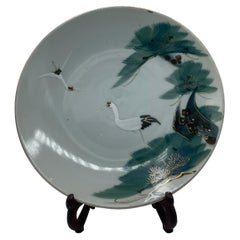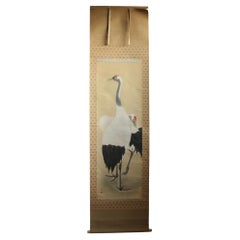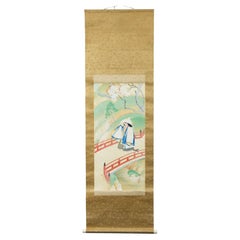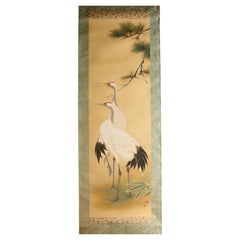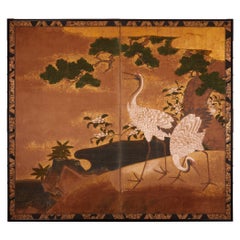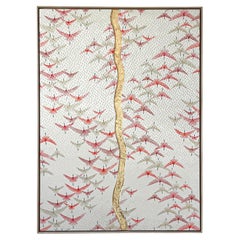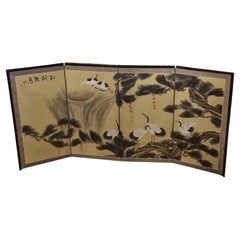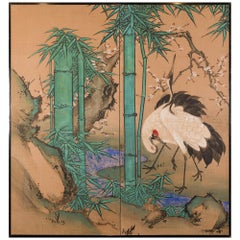Japanese Crane Art
Late 20th Century Japanese Showa Ceramics
Porcelain
Antique 19th Century Japanese Paintings and Screens
Silk
Antique Mid-19th Century Japanese Meiji Paintings and Screens
Silk
20th Century Japanese Meiji Paintings and Screens
Bronze
20th Century Japanese Paintings and Screens
Silk
Antique Late 18th Century Japanese Paintings and Screens
Gold, Gold Leaf
Late 20th Century Japanese Japonisme Paintings and Screens
Gold Leaf
20th Century Japanese Meiji Paintings and Screens
Bronze
Antique 1850s Japanese Edo Paintings and Screens
Wood, Paper
20th Century Asian Paintings and Screens
Silk
Antique Late 19th Century Japanese Meiji Metalwork
Copper, Enamel
Antique Mid-19th Century Japanese Edo Paintings and Screens
Paper
1960s Animal Paintings
Gouache
Antique Mid-19th Century Japanese Meiji Paintings and Screens
Silk
Antique Late 19th Century Japanese Meiji Lacquer
Gold
Antique 19th Century Japanese Meiji Ceramics
Earthenware
Antique 1870s Japanese Meiji Metalwork
Bronze
Early 20th Century Japanese Paintings and Screens
Brocade, Silk
Antique Early 1900s French Art Nouveau Metalwork
Bronze
20th Century French Antiquities
Brass
Mid-20th Century Japanese Showa Sculptures and Carvings
Bronze
20th Century Japanese Showa Paintings and Screens
Brass
20th Century Japanese Japonisme Textiles
Silk
Antique Late 19th Century Japanese Meiji Metalwork
Bronze
Antique Late 19th Century Japanese Meiji Metalwork
Copper, Enamel
20th Century Japanese Ceramics
Porcelain
Antique Late 19th Century Japanese Metalwork
Bronze
2010s Contemporary Black and White Photography
Silver Gelatin
Early 20th Century Japanese Taisho Paintings and Screens
Paper, Silk
Vintage 1970s Japanese Showa Decorative Art
Silk
Antique 19th Century Japanese Showa Paintings and Screens
Silk
Antique 19th Century Japanese Metalwork
Enamel
20th Century Japanese Paintings and Screens
Paper
Antique Late 17th Century Japanese Edo Paintings and Screens
Gold Leaf
Antique 19th Century Japanese Paintings and Screens
Gold, Iron
Mid-20th Century Japanese Japonisme Lacquer
Resin
Antique 19th Century Japanese Meiji Ceramics
Porcelain
Antique 19th Century Japanese Showa Paintings and Screens
Silk
2010s Contemporary Black and White Photography
Silver Gelatin
Antique 19th Century Anglo-Japanese Metalwork
Bronze
Antique 19th Century Japanese Meiji Paintings and Screens
Brass
Antique 19th Century Japanese Meiji Paintings and Screens
Fabric
Antique 19th Century Japanese Qing Ceramics
Porcelain
Antique Early 1900s Japanese Japonisme Paintings and Screens
Wood
Antique 19th Century Japanese Meiji Ceramics
Earthenware
2010s Contemporary Landscape Paintings
Silver
Antique 19th Century Japanese Meiji Paintings and Screens
Fabric
20th Century Japanese Vases
Bronze
Antique 1860s Japanese Japonisme Paintings and Screens
Brocade, Wood
Antique Late 19th Century Japanese Meiji Lacquer
Gold
Antique 18th Century Japanese Edo Paintings and Screens
Silk
Antique 1870s Japanese Meiji Lacquer
Wood, Ebony, Giltwood, Lacquer
1990s Photorealist Portrait Prints
Lithograph
Antique 17th Century Japanese Edo Paintings and Screens
Gold Leaf
Antique Late 19th Century Japanese Meiji Paintings and Screens
Gold
2010s Pop Art Abstract Prints
Offset
Antique Mid-19th Century Japanese Edo Paintings and Screens
Wood, Paper
20th Century Chinese Meiji Paintings and Screens
Bronze
20th Century Glass
Glass, Art Glass, Blown Glass
Antique 1880s Prints
Paper
- 1
Japanese Crane Art For Sale on 1stDibs
How Much is a Japanese Crane Art?
- 1stDibs ExpertApril 5, 2022In Japan, the crane normally symbolizes good fortune because of the legend that the bird can live a thousand years. The tortoise and the dragon also represent luck in that country. You'll find a collection of Japanese furniture, jewelry and decorative objects on 1stDibs.
- 1stDibs ExpertApril 5, 2022The writing on Japanese art is calligraphy art called shodo. It uses Japanese kanji and kana characters. There are a variety of different shodo styles of art, including Kaisho, which is the basic, foundational form of the art. On 1stDibs, find a range of Japanese calligraphy art from top sellers..
- 1stDibs ExpertApril 16, 2024The focus of Japanese art varies. Many traditional Japanese artists sought to capture the beauty of nature in their works. However, other Japanese artists have produced work with Buddhist themes, and contemporary artists working in the country have been inspired by a range of subjects, from socioeconomic and political issues to pop culture. On 1stDibs, explore a large selection of Japanese art.
- 1stDibs ExpertApril 5, 2022There are a variety of different types of Japanese art. One of the oldest and most admired forms of Japanese art is the art of calligraphy, which originated in the sixth or seventh century. Another type of art, ukiyo-e, is the art of the woodblock print, which depicts scenes of female beauties; kabuki actors, sumo wrestlers and more. You’ll find a variety of Japanese artwork from some of the world’s top art dealers on 1stDibs.
- 1stDibs ExpertApril 5, 2022Many art styles originated in Japan and grew in popularity over the years. Some of the most popular styles include shodo (calligraphy), ikebana, kanou and yamato-e. You’ll find a wide variety of authentic Japanese art from some of the world’s top dealers on 1stDibs.
- 1stDibs ExpertApril 5, 2022What Japanese wall art is called depends on its type. There are numerous kinds of Japanese paintings and prints, including nihonga and ukiyo-e. A Japanese wall scroll is known as a kakejiku or kakemono. On 1stDibs, find a variety of Japanese wall art.
- 1stDibs ExpertOctober 15, 2024To tell if art is Japanese or Chinese, study the piece's characteristics. With paintings, Chinese artists often use more color and tend to fill their entire canvases, while Japanese artists often include more negative space and choose subtler colors. There are also differences between the brushstrokes typical of traditional Chinese and Japanese art. In Japanese paintings, brushstrokes are often short and sharp. On the other hand, Chinese paintings often display longer, more fluid brushstrokes. Learning about the defining features of various art forms and periods and looking at examples of pieces made by Japanese and Chinese artists can help you learn to spot subtle differences. Explore a diverse assortment of Japanese and Chinese art on 1stDibs.
- 1stDibs ExpertSeptember 23, 2024What the Japanese sea art is called depends on its type. Many examples of sea art from Japan are called ukiyo-e. This term refers to woodblock prints made during the 17th, 18th and 19th centuries. The Great Wave off Kanagawa by Katsushika Hokusai is arguably the most famous ukiyo-e print depicting the sea. On 1stDibs, find a wide variety of Japanese woodblock prints.
Read More
Chicago’s Pagoda Red Has a Spirited Mix of Asian Antiques and Bold New Art
For 25 years, gallerist Betsy Nathan has leveraged her keen eye and key connections to bring a unique selection of rare finds to the market.
In L.A., Gallerist JF Chen Has Long Championed Eclectic Blue-Chip Design
Now working alongside his daughter Bianca, dealer Joel Chen has presented a most covetable array of antiques, art and contemporary creations for more than 40 years.
12 Calming Spaces Inspired by Japanese Design
From cherry-blossom-adorned walls paired with glamorous lighting to wood-paneled ceilings above checkerboard-patterned chairs, these 12 spaces seamlessly blend Eastern and Western aesthetics.
Rodrigo Rivero Lake’s Mexico City Showroom Is a Museum-Worthy Trove of Spanish Colonial and Asian Antiques
The dealer and curator has spent the past 50 years amassing a collection of exceptional art, furniture and architectural elements that trace the cultural influence of the Spanish empire from Europe to the Americas and beyond.
16 Refined Asian-Inspired Interiors
These spaces exemplify how Eastern elements elevate a home's decor.
